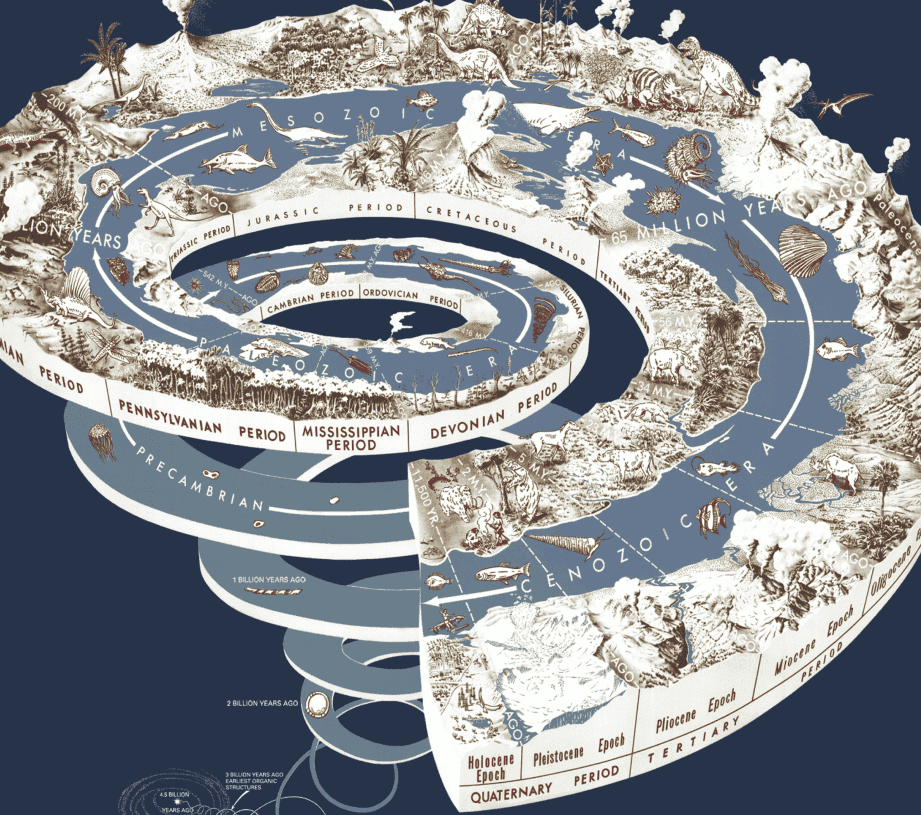The age of rocks can be determined using radiometric methods, which are based on physics.
By studying rocks from Earth, the moon, and meteorites, scientists have been able to measure their age by examining the decay of long-lasting isotopes of radioactive elements.
These isotopes are present in minerals and rocks, and their half-lives can range from 700,000,000 to over 100,000,000,000,000 years.
A piece of lunar basalt
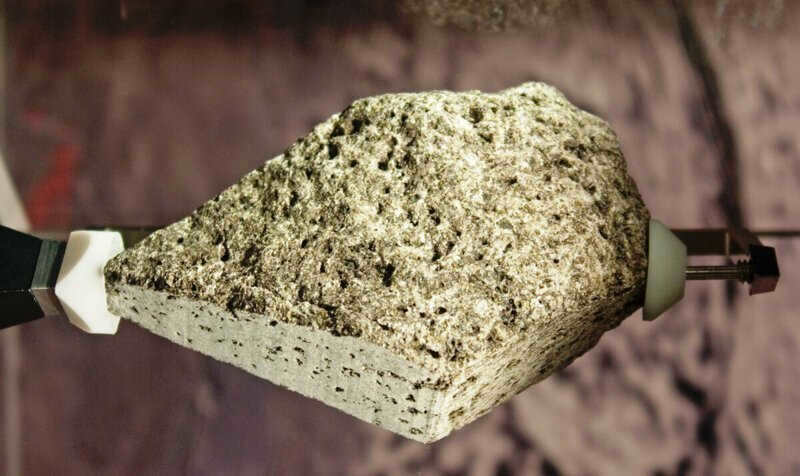
Unlike the Earth, the Moon lacks tectonic activity, allowing it to preserve ancient rocks that provide valuable insights into the age of the solar system. With its abundance of untouched samples, the Moon serves as an ideal location for dating the Earth and the entire solar system. Despite the limited number of rocks brought back to Earth by the Apollo and Moon missions, these samples offer a wide range of ages.
The oldest lunar samples collected from our planet are estimated to be between 4.4 and 4.5 billion years old. These dates establish a minimum timeframe for the Moon’s origin and contribute to our understanding of its formation.
Scientists claim that a moon rock, initially believed to be extraterrestrial, has actually originated from Earth. This particular rock, estimated to be 4 billion years old, was seemingly transported to the moon following a collision between Earth and an asteroid. The impact caused a portion of the Earth’s soil to be expelled into space.
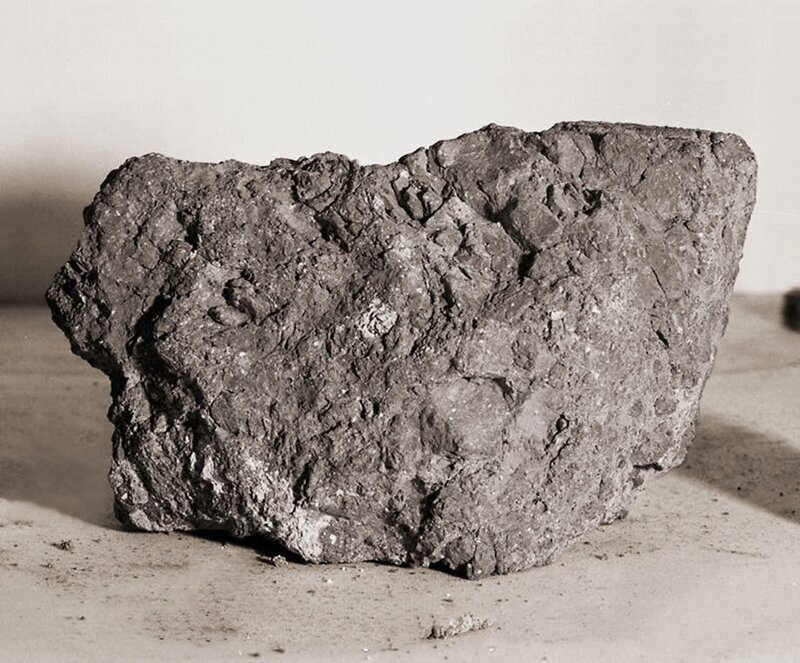
Regarding the Earth, rocks older than 3.5 billion years can be discovered on every one of the planet’s six continents.
The most ancient rocks have been unearthed in the Minnesota River Valley (3.5 – 3.7 billion years old), supracrustal rocks in western Greenland (3.7 – 3.8 billion years old), and gneisses discovered in Canada close to Great Slave Lake that date back at least 4.03 billion years.
Canada is home to a rock that scientists believe is a staggering 4.03 billion years old.
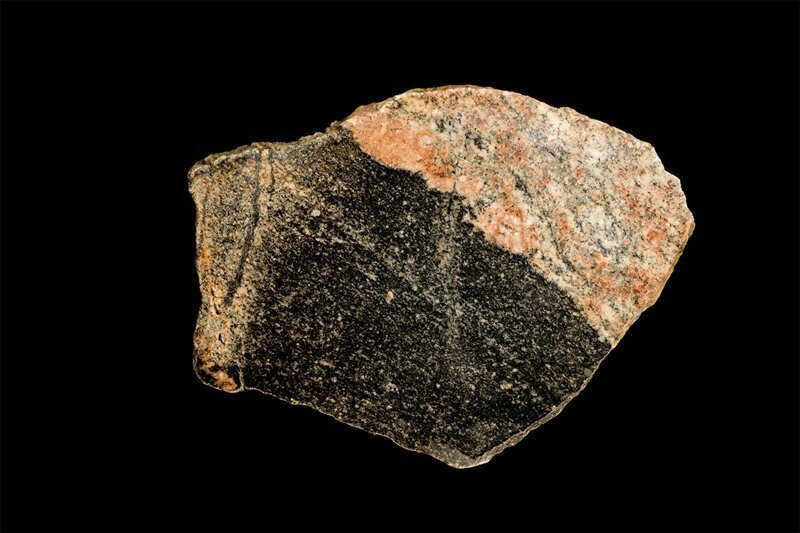
What makes these rocks unique is that they didn’t break off from the original crust but rather formed from lava flows and sediments. This suggests that the Earth’s history predates their formation.
The zircon mineral grains found in west-central Australia serve as the primary source for estimating the Earth’s age. These grains are believed to be around 4.4 billion years old. However, the original rocks from which these crystals originated have yet to be discovered.
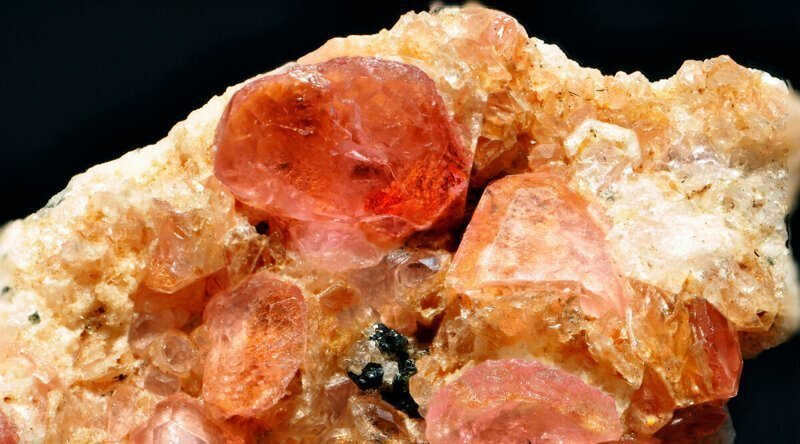
When it comes to meteorites that have landed on our planet, there are thousands of them. Out of these, more than 70 different types have been discovered and analyzed. These objects are estimated to be between 4.53 and 4.58 billion years old.
The Goba meteorite is an exceptional find as it is the largest naturally occurring iron piece on Earth, weighing over 60 tons.
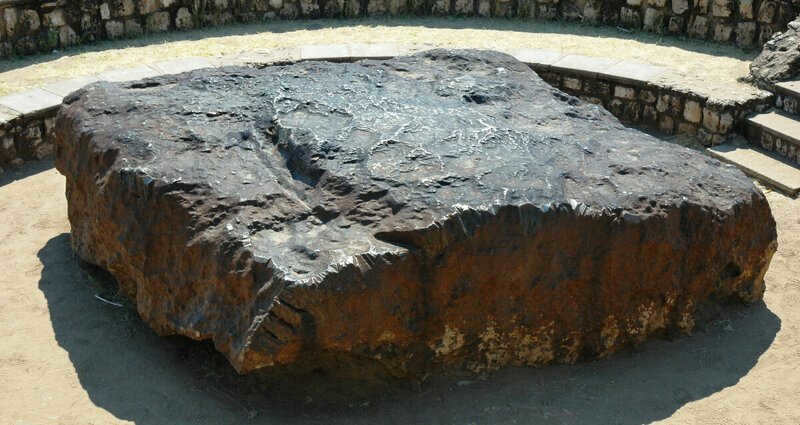
However, determining the age of the Earth from rocks of various origins and with a wide range of ages is a complex task. Scientists approach this by viewing all rocks as part of a unified and evolving system.
The key factor in determining the age is the ratio of lead isotopes 207 and 206 (Pb-207 and Pb-206), which undergo changes due to the decay of uranium-235 and uranium-238.
By analyzing the ratio of Pb-207 and Pb-206, scientists have been able to calculate the age of the Earth, meteorites, and consequently, the entire solar system.
This is how the final number of 4,540,000,000,000 years was derived. Although there may be some margin of error in the calculations, scientists assure that it is less than one percent.
Nowadays, everyone has the opportunity to acquire knowledge about the Earth’s age – it has been widely acknowledged for a considerable amount of time that our planet is approximately 4.5 billion years old. However, the question remains: who was the pioneering individual who accurately determined the age of our beloved planet? And what method did they employ to accomplish this remarkable feat?


For many years, scientists have been endeavoring to ascertain the true age of our planet, and it was only relatively recently that they were successful. But how did they do it?
The Earth is approximately 4.5 billion years old – it was not until 1953 that scientists were able to definitively determine its age. This breakthrough came about when American geochemist Claire Patterson, alongside his colleague George Tilton, devised a method for measuring the age of igneous rocks using uranium-lead and lead-lead techniques. Prior to this, researchers had greatly underestimated the Earth’s age.
In the past, the scientific community did not view the question of the Earth’s age as a scientific matter. This was because Christian theologians and natural philosophers relied on calculations from the biblical Book of Genesis to determine the planet’s formation, which suggested an age of several thousand years.
XVIII-XIX centuries
In the XVIII century, a French diplomat named Benoit de Maye made the first scientific observations about the Earth’s age. After gathering geological data, he concluded that the planet is approximately 2.4 billion years old. This estimation was fairly accurate when compared to the findings of other scientists.
For the next two centuries, the scientific community engaged in debates and discussions regarding the Earth’s age. However, it wasn’t until the early 20th century that a definitive answer emerged, thanks to the introduction of a new research technique known as radioisotope dating.
Regarding the other researchers mentioned above who were involved in studying the Earth’s age, their assumptions were quite off the mark. In 1868, British physicist William Thompson (Lord Kelvin) published a mathematical model he had developed to estimate the Earth’s cooling process. According to his model, the planet was estimated to be anywhere between 20 to 400 million years old at that time. This estimation had a wide range. Around the same time, English geologist John Phillips presented his findings. He examined sedimentary rocks and based on his analysis, proposed a new estimate of 96 million years, which was roughly similar to the age attributed to the Sun by astronomers. Later on, Kelvin faced criticism from Irish mathematician and engineer John Perry, who believed that the Earth was 4 billion years old – as it turned out, this was the closest to the actual age. However, the dispute among scientists could only be settled with the discovery of radioisotope dating in the early 20th century.
The breakthrough of using radioisotope dating to estimate the Earth’s age
What is the reason behind the belief that the Earth is 4.5 billion years old? Is it possible that the Earth is not actually 4.5 billion years old? How long has our planet existed? How much time does our planet have left? Why are people unable to perceive the truth?
The erosion of continents The Earth’s surface is gradually eroded by water precipitation. As rivers carry “hard sediment” into the seas and oceans, the process continues. Can we estimate the time it will take for the continents to be completely eroded? Let’s try to determine how much time is left before the land is entirely destroyed.
An estimation of continental erosion on a global scale (based on facts). Input data:
The total solid runoff from the 22 largest rivers on Earth is 5.5146*1012 kg.
The combined area of these 22 rivers is 46.8 million km2.
The average density of continents is 2.75 tons/m3.
The volume of the continents above water is 128,636,000 km3.
Asia accounts for 42,180,000 km3 of this volume.
America contributes 27,365,000 km3.
Africa has 22,425,000 km3.
Europe has 3,060,000 km3.
Australia and Oceania have 3,026,000 km3.
Antarctica has 30,580,000 km3.
The volume of solid runoff: 5.5146*1012 kg / 2750 kg/m3 = 2,005,309,091 m3 = 2, 005 km3. The coefficient for unrecorded rivers is 149 million km2 / 46.8 million km2 = 3.1834.
The duration of erosion, based on the present-day ocean level: 128,636,000 km3 / (2, 005 km3 *3.1834) = 20,150,000 years.
In order to reach the current level of the world ocean from the complete destruction of the entire volume of continental plates, it would take approximately 20 150 000 years, considering the observed rates of erosion.
Erosion is already underway The same approach can be utilized to estimate the duration of erosion that is currently being witnessed. Take for instance Sri Lanka’s Sigiriya, also known as Lion Rock, which stands at a height of 170 meters above the plateau level. Assuming that the top of the rock represents the initial level of the continental plate before erosion commenced, the plateau level at the mountain’s base can be seen as the outcome of erosion.

REASONS AND EVIDENCE

Table: Columns 1,2,3,4 represent reference data. Columns 5 to 10 contain data calculated from the reference data. Column 10 displays the ratio of water volume in runoff to the volume of solid outflow. The rivers are arranged based on this parameter. Rivers that are cleaner than average are highlighted in blue, while rivers that are dirtier than average are highlighted in red. Let’s rearrange this table by sorting the rivers according to the parameter in column 9 – the amount of runoff in cubic meters per square kilometer of the river basin. The table reveals that the Amazon River basin (column 9) receives the highest amount of precipitation. Therefore, the level of erosion of the continental plate in this basin is expected to be the highest.


Is it possible that the Earth is 4500 million years old? Let’s sort the data based on the values in the 6th column.


The data presented in the table suggests that over a span of 4,500 million years, the Himalayas should have experienced a decrease in elevation by approximately 937 kilometers. However, this observation contradicts the current state of the Himalayas, as they have not shown such a significant loss in elevation. According to the erosion rate mentioned in the table, which ranges from 4 to 14 million years, it is more likely that the erosion term for the Himalayas falls within this range.
Rebuttal.
Prior to this publication, three other sources, namely CONT., livejournal, and science-freaks, have raised counterarguments against my conclusions. These counterarguments challenge the interpretation of my findings.
What is the source of the Earth’s estimated age of 4500 million years?
The age of the sun. The calculation of the sun’s age was based on the depletion of thermonuclear fuel. It is believed that the age of the Earth cannot exceed the age of the sun, which is estimated to be 5 billion years old. Dating volcanic rock samples. The concept of the Earth’s age emerged after the discovery of natural radioactivity and the calculation of the half-life of radioactive elements. This knowledge is relatively new, dating back about 100 years. Extensive research has been conducted on volcanic rock samples, with the oldest ones indicating an age of 4.5 billion years. Therefore, it can be concluded that the Earth, as a planet, cannot be older than the rocks it is composed of. However, it is important to note that the age of the rocks does not necessarily equate to the age of the entire Earth. Can we truly consider the age of the rocks as representative of the age of the planet as a whole? An analogy fallacy. – Dating fossils based on the dating of the surrounding layers. – The reliability of the chronological scale. An argument is often presented based on the existence of a precise chronological scale for the evolution of life forms. According to this scale, there was no global cataclysm in the Earth’s history between 4 and 14 million years ago. However, the dating of fossil samples is not done directly, as there is no specific method for this purpose. Instead, researchers examine the volcanic rock samples found in the same layer of soil as the fossils. This situation can be likened to a joke: “Why are you looking for your wallet under the lamppost?” “Because it’s bright.” Similarly, the age of the fossils is determined indirectly by studying the age of the rocks, as there is a method for dating rocks but not fossils. This reliance on analogies rather than direct evidence is a fallacy in the chronology of paleontology. To illustrate this, let’s consider a scenario where a group of campers is buried under a landslide in a mountain gorge. After a hundred years, the remains are uncovered by erosion and examined by archaeologists. The age of the layer in which the remains are found is determined to be 99±0.6 million years using uranium-lead or potassium-argon dating methods. From this, it is concluded that the campers lived 99 million years ago. However, it is important to note that the dating methods used only provide the age of the volcanic rocks since their eruption, which serves as an upper limit for the age of the fossils. The actual age of the fossils could range from 1 year to the upper limit of the volcanic sample. Therefore, claiming that the age of the fossils is equal to the upper limit age is a logical fallacy.
TIMEFRAME FOR THE COLLAPSE OF A CONTINENT

The continent has a total volume of 22,425,000 km3. With an average erosion rate of 0.369 km3/year, it would take 60,772,000 years for complete destruction to occur. Thus, Africa will be completely destroyed in approximately 60,772,000 years.
Australia and Oceania

With a volume of 3,026,000 km3 and an average erosion rate of 0.096 km3 per year, it would take approximately 31,421,000 years to completely destroy Australia. This calculation is based on the equation: Volume / Erosion Rate = Time to complete destruction. Therefore, the duration of complete destruction of Australia is estimated to be 31,421,000 years.
The complete destruction of Australia is a process that would take around 31,421,000 years to occur.
In comparison, the landmasses of North and South America have different erosion rates and volumes that contribute to their unique geological timelines.
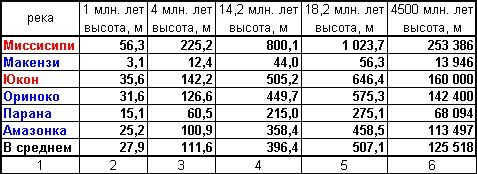
The continents have a total volume of 27,365,000 km3, and the average erosion rate is 1.174 km3 per year. By dividing the total volume by the erosion rate, we can calculate that it would take approximately 23,303,000 years for complete destruction. Therefore, it can be concluded that it would take 23,303,000 years for the Americas to be completely destroyed.
As for Europe and Asia,
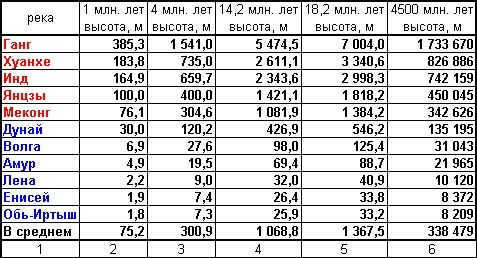
The continent has a total volume of 45,240,000 km3, with an average erosion rate of 4,107 km3 per year. Based on these figures, it would take approximately 11,016,000 years for the complete destruction of EurAsia. This is the estimated duration for the entire process to occur. Therefore, the complete destruction of EurAsia is expected to take place over a span of 11,016,000 years.
Note that this calculation applies to all continents except Antarctica.

The total volume of the continents is 128,636,000 km3, and the average rate of erosion is 5,805 km3 per year. By dividing the total volume by the erosion rate, we can calculate that it would take approximately 22,158,000 years to completely destroy the Earth’s continents. In other words, it would take 22,158,000 years for the Earth’s continents to be completely destroyed.
I have observed a significant event that occurred on Earth recently. It was crucial for me to establish the exact date of this event. The method of erosion is not as straightforward as it may initially appear. After years of dedicated research, I arrived at this conclusion. It is not my objective to determine the Earth’s age with absolute precision. That task should be left to experts and professionals. We must consider factors such as coastline erosion (in kilometers) and wind erosion. The precise determination of the catastrophe’s timing can be a laborious undertaking. Explaining when dinosaurs existed, how organisms survived after such a global disaster, and how life was restored in such a relatively short period of time is not my goal. My objective is to demonstrate a significant flaw in human understanding of the Earth’s age, which I have successfully done.
Main point
The Earth is not believed to be 4500 million years old. Based on the destruction of the Ancient Planet, scientists estimate that the Earth’s age falls between 4,000,000 and 15,000,000 years. The durability of the Earth’s solid rock is not infinite either. The continents are undergoing intense erosion, which is gradually wearing away their surfaces. This erosion also leads to the displacement of water, causing a rise in the world’s oceans. On average, we are approximately 15 million years away from a complete extinction of land. This is an inevitable reality. In the future, there will be vast areas of warm, shallow seas in just 15 million years. Dolphins will be the only surviving mammals on Earth, as there will be no place for humans. Our scientific understanding of the Cosmos is still in its infancy. It has only been around for the past 500 years, and our knowledge continues to evolve with new scientific discoveries. I encourage people to consider the new evidence regarding the Earth’s age and its origins.
Popper:
The notion that the Earth is 4500 million years old has been refuted by evidence of erosion, rendering it no longer valid.
A Message to Readers of the Article “The Age of the Earth”
Why is it so crucial for me that you comprehend this publication? Because this publication can be grasped by anyone. Irrespective of their level of education. It is lucid and comprehensible. There is no need to provide any evidence for it, as this truth is self-evident. However, not everything is self-evident. There exist more intricate truths. And in order to comprehend them, you will require, in addition to logic and common sense, faith in the author of the ideas. Without faith and trust in the source of information, it is impossible to embrace intricate knowledge. Furthermore, it is physically impractical to prove every thesis. In reality, our lives will not be affected by the age of the Earth. In this regard, it is inconsequential whether you believe it or not. Nevertheless, there are notions on which our future hinges. It is of utmost importance whether you accept them as truth or not. The purpose of this publication is to establish trust. To me, this publication is a test. If I fail to convince you of my correctness on this “trivial” matter, I will be rendered powerless. I am aware that this article challenges a deep-seated stereotype about the age of the Earth. It is difficult for an individual to alter their perspective. However, it must be done. False knowledge leads us to a dead end. Similar false stereotypes have been cultivated in spiritual values, in the field of economics, and in the realm of state administration. I will have to debunk numerous misconceptions. I do it, for the benefit of all of us. And I need to witness that you require it as well. I need spiritual encouragement.

Claire Patterson, an exceptional American geochemist who was born a century ago, made a groundbreaking contribution to the field of scientific research by being the first to accurately determine the age of our planet. Additionally, he was also the pioneer in recognizing the hazards associated with lead compounds and actively worked towards combating environmental pollution caused by them. Despite making these two significant discoveries – one being of utmost theoretical importance and the other having immense practical implications – Patterson’s name unfortunately does not enjoy the level of recognition it truly deserves.
Four and a half billion years
Claire Patterson hails from the quaint town of Mitchenville, Iowa. His passion for chemistry ignited at a young age, and by the time he reached eighth grade, he was already surpassing his teachers’ knowledge. Graduating from high school at the tender age of 16, Patterson went on to obtain a chemistry degree from Grinnell College in 1943. It was during his time at college that he crossed paths with his future wife, Lorna McCleary. Together, they embarked on a journey to the University of Iowa, where Patterson accomplished the remarkable feat of earning a master’s degree in chemistry in just nine months.
In 1944, Patterson and his spouse received an invitation to become a part of the Manhattan Project (the development of nuclear weapons in the United States), a classified facility located in Oak Ridge, Tennessee. Patterson was assigned to the task of using mass spectrometry to separate uranium isotopes. Witnessing the devastating bombings of Hiroshima and Nagasaki deeply disturbed him, causing him to withdraw from any involvement in military endeavors. Clare Patterson, for his contributions in molecular spectroscopy, successfully obtained his Ph.D. from the University of Chicago.
The concept of determining the age of rocks based on the ratio of radioactive decay products was first proposed by Ernest Rutherford (1871-1937) in 1904. The basic idea was that alpha particles, which are produced through the decay of uranium, are unable to escape from the rock and instead transform into helium. Therefore, by measuring the amount of helium present in the rock, it is possible to determine the extent to which uranium has decayed over the rock’s existence. By combining this information with the remaining uranium content, it becomes possible to calculate the initial uranium content at the time the rock was formed, as well as the fraction of uranium that has decayed since then. From there, it is a straightforward process to determine the age of the rock, using the known half-life of uranium.
The technique relied on the presumption that the helium produced would be unable to escape from the rock. However, there were significant uncertainties surrounding this notion as helium is known to be volatile. It would be advantageous to gauge the quantity of a certain substance that is recognized to persist within the rock and was absent during its formation.
In the late 19th and early 20th centuries, Bertrand Boltwood (1870-1927) made a groundbreaking discovery that revolutionized our understanding of geological dating. Boltwood demonstrated that uranium undergoes decay and produces lead, which remains trapped within rocks. By measuring the ratio of uranium and lead atoms in uranium crystalline compounds, Boltwood was able to accurately calculate the age of rocks. The probability of a lead atom entering such a crystal during its formation is extremely low, making this method highly reliable.
Through his experiments with various samples of uranium ore, Boltwood determined that the age of these rocks ranged from 400 million to 2 billion years. This revelation caused a sensation in the scientific community, as it challenged the prevailing belief that the Earth was much younger. Prior to Boltwood’s findings, William Thomson (1824-1907) had estimated the Earth’s age to be no more than 50 million years based on his calculations of its cooling rate.
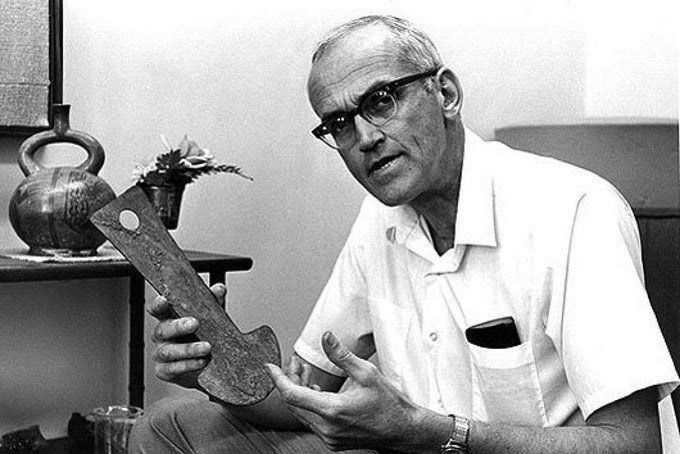
Claire Patterson in 1972
Subsequent to the advancement of mass spectrometry and the introduction of techniques capable of quantifying various isotopes of the same element, uranium-lead dating underwent significant enhancements. Additional methods for isotopic dating of rocks also emerged. However, a comprehensive explanation of these methods is beyond the scope of this article.
The primary obstacle faced by Patterson was to locate the most ancient rocks attainable. All other aspects were merely technicalities.
Patterson’s ingenious concept was that the search for the oldest rocks was unfeasible and, more importantly, unnecessary. What proved essential was determining the uranium-to-lead ratio in meteorites that had presumably solidified during the same period as the Earth.
Thousands of years ago, an extraordinary event occurred in Arizona when a meteorite made its way to the ground. The remnants of this cosmic event can still be found today, creating an eerie and captivating location known by various names such as Devil’s Canyon, Arizona Crater, or Barringer Crater, named after the brave explorer and mining engineer Daniel Moreau Barringer. The impact crater left by the meteorite is truly remarkable, stretching over 1.2 km in diameter and reaching a depth of 219 m. The crater’s edge stands tall, rising 46 m above the surrounding plain. In 1953, Patterson conducted a groundbreaking study, analyzing the uranium and lead ratio in fragments of the Arizona meteorite. Through his research, he determined the meteorite’s age to be an astonishing 4.55 billion years, with a margin of error of 70 million years.
This particular date has been widely accepted by the scientific community as the age of the Earth’s crust. It has remained virtually unaltered since 1953, albeit with a decreased margin of error. In 1956, Patterson published his findings in the journal Geochimica et Cosmochimica Acta, and despite attempts by “the best and most capable critics,” as the scientist himself stated, to discredit it, they ultimately failed. However, one day, a Christian evangelist appeared at his doorstep and politely informed him that a scientist who contradicted the Old Testament on such a significant matter would be condemned to hell.
Scientifically known Earth rocks are younger than meteorites. The oldest rocks discovered in Canada date back 3.96 billion years. Additionally, the oldest minerals, zircons, found in Western Australia’s Jack Hills sedimentary rocks, originated 4.4 billion years ago.
Definition of Leaded Gasoline
Leaded gasoline, also known as leaded petrol, is a type of fuel that contains a small amount of the element lead. This fuel was commonly used in the past, but its usage has significantly declined due to its harmful effects on human health and the environment.
The discovery and research conducted by Clare Patterson, a renowned scientist, is comparable in significance to the groundbreaking discovery of the DNA structure by James Watson and Francis Crick. In 1953, Patterson made significant contributions to determining the age of the Earth, which could have potentially earned him a Nobel Prize in Physics. However, it is believed that his staunch advocacy against pollution may have hindered his chances of receiving this prestigious award.
In addition to his work on the age of the Earth, Patterson also utilized his analytical technique to measure trace amounts of lead in various environments. He conducted studies on ocean bottom sediments as well as ice samples from Greenland and Antarctica. By analyzing the lead content in different layers of Greenland glaciers, Patterson was able to estimate the long-term dynamics of lead compounds in the Earth’s atmosphere.
Through the analysis of ice and bottom sediments, it has been determined that there has been an increasing amount of lead in the atmosphere since the 1920s. When samples of ocean water were taken at different depths, it was found that the samples from the surface contained significantly more lead than those taken at depth. It was not difficult to deduce that this pollution was caused by human activity, and the source was clearly gasoline.
In order to understand the relationship between gasoline and lead, we must travel back in time to the 1920s in America and recall some knowledge from the field of organic chemistry.
In order for a gasoline-powered internal combustion engine to operate smoothly, the gasoline must burn evenly. However, this was not the case in the early twentieth century, as there were small explosions occurring inside car engines. As a result, these engines not only ran very loudly, but they also experienced frequent breakdowns.

An advertisement from Life magazine in 1953 promotes leaded gasoline with the slogan, “‘Knock! – that’s your car saying “Ouch!”‘ The ad emphasizes the negative impact of low-quality fuel on both the car’s performance and the driver’s wallet, and suggests using Ethyl gasoline as a solution.
The octane rating is used to measure a fuel’s resistance to detonation. This rating indicates the percentage of isooctane in a mixture with heptane that detonates in the same way as the fuel being tested. For instance, AI 95 gasoline has the same resistance to detonation as a blend containing 95% isooctane. Heptane is easily detonated, while isooctane is highly resistant, so a higher octane number indicates better gasoline quality.
Therefore, during the emergence of the automobile industry, a query arose: how can the octane level be increased? (Obviously, the term “octane number” was coined after the issue arose.) This predicament was tackled by Thomas Midgeley, Jr. (1889-1944), a notable American chemist and innovator employed by General Motors. In 1921, he proposed the inclusion of an inexpensive and efficient anti-knock additive to gasoline – tetraethyl lead (TGE), which hinders the creation of peroxide compounds in the fuel and consequently diminishes the likelihood of ignition.

This discovery was a tremendous triumph; numerous other additives had been experimented with prior to it. For instance, Midgley tested a tellurium additive, which proved to be effective but had an extremely unpleasant odor: during the testing, his wife banished the inventor to the basement due to the lingering stench, despite changing clothes and taking a bath. In the end, TPP emerged as the victor.
Naturally, no one desired the presence of metallic lead precipitate in the engine cylinder. To eliminate it, TPP was introduced into gasoline alongside substances known as carriers – chlorine- or bromine-containing compounds that form volatile compounds with lead. The combination of TPP and carrier was referred to as ethyl liquid, and gasoline containing this additive became known as leaded gasoline. (Please note that the term “lead” has been removed from the commercial product names.)
As the lead soars through the atmosphere, the engine operates seamlessly, the technical issue is resolved, and there is a rapid growth of light motor vehicles in America and Europe. However, a new predicament has emerged, which humanity will not address until sixty years into the future. The accumulation of lead in the environment has become a pressing concern.

A vintage gasoline pump displays a sign advertising leaded gasoline without mentioning the presence of lead.
Thomas Midgely, in addition to DDT inventor Paul Muller (1899-1965), can be considered one of the chemists who have caused the most harm to the environment. This individual can be credited with at least two ingenious concepts that have had disastrous consequences. The initial concept was the TPP. Midgley’s second concept involved the utilization of Freons in refrigerators (previously, coolers utilized more toxic and explosive substances, making Freons appear to be a safer alternative).
Midgeley met his tragic end due to his own creation. In 1940, he contracted polio and was left paralyzed, but he remained determined and devised a complex mechanical apparatus consisting of ropes and pulleys that could lift him out of bed. However, in 1944 (around the time when young Patterson became a master and headed to Oak Ridge), Midgley became entangled in the ropes and tragically died from asphyxiation.
According to environmental historian John McNeil, Midgeley had a greater negative impact on the atmosphere than any other individual in the history of the planet. However, solely attributing the blame to him would not be entirely fair. Those who benefitted from ethanol were reluctant to let it go.
“Safe” leadership
Currently, the concept of “leadership” is often associated with terms like “responsibility” or “guidance.” We understand that effective leadership can shape the direction of an organization and lead to positive outcomes. But in the early 1900s, this was not widely recognized. The importance of leadership, of course, was acknowledged – influential figures like Benjamin Franklin spoke about it – but what does it truly mean to be a leader? How does leadership impact the success of a team or a company?
In August 1924, after discovering a more cost-effective process for synthesizing TPP, Standard Oil (later known as Exxon), along with General Motors and Dupont, established the Ethyl Gasoline Corporation with the aim of producing a revolutionary gasoline additive. Construction of factories began shortly thereafter. However, peculiar occurrences took place at these plants: workers fell ill, experienced weight loss, witnessed disturbing hallucinations, and one individual even tragically took his own life by jumping out of a window. The DuPont facility in Deepwater earned the nickname “House of Butterflies” due to poisoned employees attempting to catch imaginary insects in the air. The presence of lead in the volatile organic compounds posed an imminent and deadly threat, making it impossible to conceal the extent of the problem from the general public.
At that time, both the media and the government showed a keen interest in the situation. The manufacturing companies suggested that factories should enhance their ventilation systems and enforce safety regulations more strictly, assuring that this would resolve the issue. The findings from experiments conducted on animals, which involved inhaling exhaust fumes, seemed to support their claims of safety. However, skeptics wasted no time in highlighting the fact that a study conducted over a span of several months does not provide any insight into the long-term effects on urban residents who have been exposed to these gases for years.

In 1924, General Motors’ research and development department hired Robert Kehoe, a young physician specializing in occupational health. His main objective was to ensure the safety of production processes. However, Kehoe ended up advocating for the safety of lead in gasoline and became one of Patterson’s main adversaries. In 1930, he established his own laboratory at the University of Cincinnati, which was the first of its kind dedicated to the study of toxicology in industrial production. The only issue was that the laboratory was funded by General Motors, DuPont, and Ethyl. As per Kehoe’s contract, each manuscript had to be reviewed and approved by the sponsors before publication.
Kehoe became renowned for his expertise in government and public health. He contended, among other points, that the existence of lead in humans and other organisms was ordinary and that lead levels below a “threshold” were not harmful. For fifty years, Robert Kehoe dominated the discussion on tetraethyl lead. However, following the war, lead research was taken over by Claire Patterson.
The end of the TPP era
Patterson was exceptionally knowledgeable about the widespread occurrence of lead in water and air. While conducting his research on the Earth’s age, he took great precautions to create a controlled environment that was free of lead contamination, similar to how scientists working with ancient human DNA must carefully avoid any modern human DNA interference. However, Patterson also discovered that this was not always the case. Prior to Thomas Midgley’s invention, water, air, and soil were devoid of lead (although lead levels have been increasing since the advent of human civilization). This signifies that the presence of lead is far from being “normal”.
Following the publication of Patterson and his colleague’s initial research on lead contamination in water and snow in 1963, the funding abruptly ceased. Representatives from the fuel industry contacted the head of Caltech in an attempt to discredit the scientist and prevent him from publishing any more damning findings. They even offered Patterson financial grants and made efforts to block alternative sources of funding. They insinuated that he was peculiar and mentally unstable. While the latter accusation was true, Patterson indeed declined a permanent teaching position at the university, favored khaki T-shirts over formal attire, occasionally sported mismatched socks, and even wore a gas mask on particularly smoggy days when running long distances. Nowadays, it takes much more for a scientist to be considered eccentric – simply wearing colorful socks or donning a mask during the COVID-19 pandemic won’t suffice. However, during the mid-20th century, these behaviors were still regarded as peculiarities.
Despite all of this, in 1965, Archives of Environmental Health magazine published an essay by Claire Patterson on the topic of “natural” and “contaminated” lead in the environment, titled “Contaminated and Natural Lead Environments of Man.” Patterson argued that the observed pattern of lead contamination could not have been created by natural sources such as volcanoes or meteoric smoke, placing the blame on human activity.
This publication marked the beginning of a movement to prohibit the use of tetraethyl lead. While this campaign did not immediately succeed, it eventually achieved its goal.
In 1966, Patterson was able to secure a hearing on the dangers of lead contamination in the U.S. Senate. Although he was not able to convince the senators at that time, his efforts led to increased involvement from other researchers and gained him more supporters within scientific circles.
In 1972, the U.S. Environmental Protection Agency (EPA) implemented a ban on the use of tetraethyl lead and the production of engines that ran on leaded gasoline. The EPA faced legal action from the manufacturers of these engines, but ultimately prevailed in court. From 1976 onwards, a gradual process of phasing out gasoline containing tetraethyl lead was initiated, and by the mid-1980s, it was nearly complete. By 1994, lead levels in the bloodstream of Americans had decreased by 78% compared to levels recorded in 1978.
In the latter part of the 1970s, the USSR also commenced a gradual phase-out of tetraethyl lead. This process was eventually completed in Russia during the early 2000s. Remarkably, Algeria remained the last country in the world to permit the use of tetraethyl lead in gasoline for passenger cars, with a ban only being implemented in 2021.
The rejection of TPP was influenced by the discovery of other, less harmful anti-detonators such as ferrocene and methyl tert-butyl ether. In 1949, UOP researchers developed a technology called platforming, which modified gasoline catalytically and increased its resistance to knocking. This advancement made the addition of anti-knock detonators unnecessary.
However, tetraethyl lead is still added to aviation gasoline (although most modern airplanes use kerosene instead of gasoline) and race car fuel.
Opinions about Clare Patterson were mixed. He had both friends and enemies, but he consistently followed his own moral compass and did what he believed was right. Patterson’s life was a remarkable combination of significant contributions to fundamental science, finding practical solutions to pressing problems, and maintaining strong moral principles.
In the 1980s, Patterson continued his travels to expeditions in search of new samples. Eventually, he received recognition for his work, becoming a member of the National Academy of Sciences and receiving the prestigious Tyler Award in environmental science. To honor his contributions, an asteroid was named after him. Tragically, Patterson passed away from an asthma attack on December 5, 1995. Interestingly, during that same month, the last stocks of leaded gasoline were removed from gas stations in the United States.
For a considerable amount of time, the majority of countries only acknowledged the theological theory of the world’s creation. However, with the advent of modern geological research methods, it became possible to estimate the age of the planet and the emergence of life on it.
There are various theories that explain how scientists determine the age of the Earth. Some of these theories have emerged in the past century, but many of them have been disproven due to advancements in scientific knowledge. Only a few assumptions have been scientifically validated.
Be cautious! If your work is found to be plagiarized by your teacher, you may face serious consequences such as expulsion. If you’re unable to write your own work, you can order it here.
The most informative method for calculating the age of the Earth is considered to be radiometric dating. This technique involves analyzing ancient rocks that have surfaced on the planet, and through this analysis, scientists have determined that some of these rocks are over 4-4.5 billion years old.
There are also other research methods that are less accurate in determining the age of the Earth:
- Examining salt deposits in layers of rock and water;
- Studying canyons and mountains;
- Analyzing the moon.
Radiometric dating
The scientific community has long acknowledged the validity of Kelvin’s data on the age of the planet. Kelvin utilized the fundamental principles of thermodynamics in his research. Through analysis, it was determined that the planet’s molten state cooled to its current state over a period of 20,000 years. However, this hypothesis has been proven to be inaccurate.
Subsequently, it was discovered that the early stages of Earth’s formation involved a significant concentration of radioactive isotopes, which released a substantial amount of thermal energy as they decayed. This finding supports the notion that the planet could not have cooled down so rapidly.
During the research process, the analysis of radioactive isotope traces concentrated in rocks is conducted using the radiometric dating method. The data for this analysis is provided by Washington University in St. Louis.
Based on the phenomenon of radioactive decay, the scientist A. Holmes successfully devised a method to calculate the age of rocks, which later became known as radiometric dating. To determine the age of rocks, it is crucial to calculate the concentration of decay products of substances such as:
Even though the decay process of these isotopes took place hundreds of thousands of years ago, it is now possible to detect evidence of this phenomenon in rocks. The most well-researched and straightforward method for determining the ratio of uranium and its decay products in the rock is radiometric dating.
The rate of decay for radioactive isotopes is not constant. It takes 200,000 years for uranium to decay into lead. The oldest known rocks have been discovered in Canada, Australia, and South Africa, and they were formed approximately 4-4.5 billion years ago. Scientists believe that the original basalt rocks no longer exist today.
Determining the age of a planet through salt accumulation
In 1715, Edmund Halley supposedly determined the age of the Earth for the first time by analyzing the salinity of water in the world’s oceans. This conclusion was later supported by other scientists.
The theory does not account for the period of time it took for the planet to reach the necessary temperature for the formation of the Earth’s crust. Therefore, analyzing the salt concentration in water only provides an approximate calculation of the age of the world’s oceans. It is possible that the planet is much older.
According to this hypothesis, the formation of the world ocean occurred between 90 and 350 million years in the past. These conclusions were disproven when researchers began actively examining the rocks and remains of marine mollusks, which were found to be much older than the previously stated time periods.
Determining the age of the planet through canyons
Some experts use geological formations such as canyons to support their argument about the Earth’s age. The Grand Canyon in the United States is particularly popular among scientists. Over thousands of years, the Colorado River has carved out deep depressions in the expansive plateau, resulting in depths of up to 1800 meters.
The formation of the canyon dates back to around 5-6 million years ago. It is believed that during this time, geological activities such as the shifting of lithospheric plates took place, resulting in the uplift of the expansive plateau. This uplift led to an increase in the slope angle of the river flow across the plateau surface, which in turn accelerated soil erosion. The eroded materials were then carried away by the Colorado River and eventually deposited into the world ocean.
The composition of the plateau played a significant role in the formation of the canyon. The materials that made up the plateau, including rocks characterized by their softness and susceptibility to rapid deterioration, were easily eroded by the powerful force of the Colorado River. It is worth noting that the canyon continues to deepen even to this day.
Determining the Earth’s Age through Lunar Observations
Scientists often use the Moon as a reference point to estimate the age of the Earth. According to their theories, during the early stages of Earth’s formation, a catastrophic collision occurred between Earth and a celestial body called Teia. This collision resulted in the ejection of various debris into space, eventually forming a ring that eventually coalesced into our planet’s satellite, the Moon.
Initially, the Moon was much closer to Earth, estimated to be approximately 22,000 kilometers from the planet’s surface. During this time, the gravitational forces gave rise to massive hurricanes in Earth’s primordial oceans. However, over time, the Moon has been gradually moving away from Earth due to the weakening of our planet’s magnetic field.
Thanks to careful observations, scientists have been able to calculate the rate at which the Moon is moving away from the Earth. It is estimated to be approximately 2 to 4 centimeters per year. Currently, the Moon is located about 400 thousand kilometers away from our planet. Armed with this information, some researchers have been able to determine that the Moon was formed approximately 3.5 to 4.2 billion years ago.
The appearance of our planet has undergone continuous transformations over billions of years. Originating from the vast expanse of the Universe, the Earth has undergone a process of evolution, resulting in the formation of complex geological layers. Consequently, scientists have classified the geological history of the Earth into distinct time periods characterized by variations in chemical composition, structural features of the planet, continental outlines, and the presence of different life forms.
The geological history of the Earth is measured using a sophisticated scale. Throughout its existence, the planet has witnessed four significant stages of development, known as eons. Within these eons, three are further divided into eras, which, in turn, consist of distinct periods.
The Earth’s geological eras are known for their extensive duration, during which substantial transformations in the planet’s physical features have been observed. These eras are further divided into geological periods, which can be distinguished only by an expert due to their subtle variations.

During the formation of the planet approximately 4.6 billion years ago within the solar system, it went through a series of processes that lasted for 600 million years. This particular period, known as the katharcheion, translates from Greek as “beneath the oldest”.
The katharcheion is further divided into various eras. This phase is characterized by the planet’s formation, the absence of its crust and core. At that time, the Earth appeared as a dark gray sphere with a uniform surface, containing the same evidence of asteroid collisions as the Moon or Mercury.
This calamity had a profound impact on the chemical and physical phenomena occurring on the planet. Consequently, it resulted in the creation of a dense atmosphere, primarily composed of carbon dioxide. The Earth’s surface was teeming with oceans that reached scorching temperatures of 250 degrees Celsius.
Nevertheless, the water did not evaporate due to the overwhelming atmospheric pressure. It is hypothesized that there was no existence of life on the planet during the catarchean era. Its surface was bleak and blazing like a fiery furnace.
The catarchean aeon transitioned into the archean period. This marks the beginning of the first aeon, which is further divided into eras. The initial era, known as the Eorchean, occurred approximately 4 to 3.6 billion years ago. During this period, the oldest surviving rocks on Earth were formed. The Eorchean era is characterized by the formation of the Earth’s crust, which prevented molten lava from reaching the surface.
During this time, the planet had a dense atmosphere with a high concentration of carbon dioxide and low levels of oxygen. Temperatures were lower compared to the catarchean aeon. The seas, which had not yet merged into a single ocean, existed as separate basins with water temperatures reaching up to 90°C.
Life emerged on the planet during the Eorhean era, with the appearance of prokaryotes as primitive microscopic organisms without a nucleus. These prokaryotes thrived by metabolizing inorganic substances that were abundant during that time. Unfortunately, the remnants of these ancient organisms that inhabited the Earth during the Eoarchaea have not been preserved.
Scientists have only managed to discover traces of their existence, such as stromatolites, which are fossilized structures that were once created by prokaryotes.
The Eorchean era was replaced by a new era called the “paleoarchaeon” around 3.6 billion years in the past. This transition led to the formation of the Earth’s solid core, resulting in a significant increase in gravity. This increase in gravity played a crucial role in preventing the dissipation of the Earth’s atmosphere. During the Paleoarchaean era, the planet’s atmosphere became enriched with oxygen, which was a byproduct of the vital activities of microorganisms.
Within the Paleoarchaean period, the oldest known fossilized microbes and other life forms, including bacteria, were discovered in fossils found in Australia.
The Mesoarchaea era, which is the third geological era of the Earth, began approximately 3.2 billion years ago. This era witnessed the formation of the first supercontinents, where entire land masses emerged from the ocean.
The Neoarchaean era began approximately 2.8 billion years ago, replacing the previous Mesoarchaean era. It was during this time that the phenomenon of photosynthesis emerged, which involves the conversion of inorganic substances into organic compounds within living cells, accompanied by the liberation of oxygen. This process led to a rapid accumulation of oxygen in the Earth’s atmosphere.
Consequently, anaerobic organisms, which were unable to tolerate oxygen and perished upon exposure to it, experienced a mass extinction event. In contrast, aerobic organisms, which relied on oxygen for their metabolic activities, thrived and became prevalent.
Aerobic organisms were well suited to survive in a variety of habitats, leading to the emergence of life on Earth. This occurred approximately 2.5 billion years ago, marking the start of the Paleoproterozoic era. It was during this era that the first organisms with complex cell structures, including a nucleus known as “eukaryotes,” appeared.
The Mesoproterozoic era, which commenced 1.6 billion years ago, witnessed the formation of the supercontinent Rodinia. Organisms in this era adapted to their surroundings by utilizing sexual reproduction as a means of gene exchange and adaptation to environmental changes.
The Neoproterozoic replaced the Mesoproterozoic approximately 1 billion years ago. This era was notable for the emergence of new organisms that possessed an external skeleton or hard shell. It is also known for being a period of extensive glaciation, with ice reaching the equator of the Earth.
The Dicambrian, which is the longest epoch on Earth, consists of various eons and eras, including the Catarchean eon, as well as the Eoarchean, Paleoarchean, Mesoarchean, Neoarchean, Paleoproterozoic, Mesoproterozoic, and Neoproterozoic eras. During this time, life on Earth was either completely absent or limited to primitive forms, such as microorganisms.
The Paleozoic era began 541 million years ago, marking the end of the Neoproterozoic era. This period witnessed a rapid proliferation of diverse life forms on Earth, with organisms evolving into more intricate and sophisticated beings. Initially, various types of plants emerged, paving the way for the subsequent evolution of multicellular animal organisms.
Among the first life forms to evolve were invertebrates, such as polyps, jellyfish, and worms. These were followed by vertebrates, including fish and amphibians. The evolution of invertebrates occurred simultaneously with the development of vertebrates, resulting in the emergence of mollusks and arthropods. This group encompassed crustaceans, spiders, and insects.
While in the past, life could only be found in water, during the specified period, living organisms started to inhabit land areas. The conclusion of the Paleozoic era is distinguished by the emergence of dense forests on Earth, composed of tree-like ferns, horsetails, and plaunas. Nowadays, their remains can be found as coal deposits, which are valuable sources of fuel.
The Paleozoic era was characterized by a warm climate. In its most well-known stage, the Carboniferous, the continents’ surface was covered with enormous fern-like plants and humid swamps. These swamps served as habitats for giant amphibians that resembled newts or salamanders in appearance. They were similar in size to modern crocodiles.
During the Mesozoic Era, which occurred approximately 252.17 million years ago, the Earth experienced a climate that was both dry and hot. This period also witnessed the gradual breakup of the supercontinent Pangaea, leading to the formation of the continents we recognize today. Additionally, the seas as we know them today began to take shape. As the era drew to a close, the climate shifted towards a wetter environment.
Throughout the Mesozoic Era, the land was covered in lush forests and vegetation, including ancient plants known as holodwarf plants that are closely related to modern conifers. Remarkably, certain groups of plant organisms, such as cycads, have managed to survive from this era and still exist on our planet today. Furthermore, the Mesozoic Era is notable for the emergence of the first flowering plants, which are also referred to as covered plants.
Scientists often mention the animal kingdom of the Mesozoic era. This particular time period is famously known as the prime of reptiles, with a wide variety of species ranging from small, lizard-like creatures to massive organisms larger than elephants. The Mesozoic era witnessed the emergence of dinosaurs, as well as crocodiles and birds, which are considered descendants of dinosaurs.
Prior to the existence of dinosaurs, the Earth was dominated by saber-toothed lizards, which were creatures that occupied a middle ground between reptiles and mammals. It is believed that these creatures served as the ancestors of mammals towards the end of the Mesozoic era.
66 million years ago, Earth experienced significant and rapid climatic changes, leading to a drier and colder climate. This posed a challenge for large reptiles, as their size made it difficult for them to find warm hiding places and enter torpor, ultimately resulting in their extinction. However, smaller organisms were able to adapt and survive.
During this time, mammals began to thrive due to their ability to maintain a stable body temperature, which allowed them to withstand the cold. This marked the beginning of the ongoing Cenozoic Era. The Cenozoic Era is further divided into periods characterized by different species of flora and fauna, as well as varying climatic conditions.
These changes ultimately shaped the planet into its present-day form, with diverse natural zones such as forests, steppes, deserts, and tundras. These areas are home to a variety of plant life and mammalian animals.
Evolution of living organisms
The process of the emergence of life on Earth commenced over 3.5 billion years ago, following the completion of the formation of the Earth’s crust. The extended emergence and progress of living organisms on the planet have contributed to the development of distinct topography and climate.
Tectonic and climatic alterations have had a significant impact on the planet’s biosphere. Scientists classify the history of Earth into various stages, with the most prominent being the life eras, which are further divided into periods. These periods consist of epochs, and epochs, in turn, consist of centuries.
Life on the planet endures through two distinct stages:
The Cryptozoic era encompasses several eras:

When examining the progression of life on our planet, we can witness not only chronological processes, but also the evolution that took place during specific stages of the development of living organisms. These stages were heavily influenced by changes in climate, such as the ice age and global warming.
The Archean Era
One of the most significant transformations in Earth’s history occurred with the emergence of blue-green algae, also known as prokaryotes, and multicellular organisms. The unique characteristic of prokaryotes was their ability to reproduce and perform photosynthesis. During this era, heterotrophs, which were proteinaceous substances capable of absorbing organic materials dissolved in water, came into existence. The emergence of these organisms led to the division of the world into animal and plant kingdoms.
Proterozoic Era
During the specified time period, there was an active development of life. The Proterozoic Era witnessed the emergence and evolution of various organisms, including:
- single-celled algae;
- earthworms;
- mollusks;
- marine polychaete worms.
Furthermore, in the Proterozoic Era, the first chordates in the form of lancet-shaped creatures appeared. Additionally, soils began to form in close proximity to bodies of water.
Paleozoic Era
Algae, marine invertebrates, and mollusks were active on Earth during the Cambrian period. Additionally, the trilobites underwent a transformation during the Ordovician period, transitioning from having defensive mechanisms to developing calcareous shells. During this time, Earth was also home to cephalopod mollusks with straight or slightly curved shells, which were particularly abundant.
The earliest vertebrate organisms were fish-like jawless creatures known as telodonts. Life predominantly flourished in aquatic habitats.
During the Silurian era, there were significant advancements in the evolution of corals and trilobites. It was during this period that the first vertebrate organisms emerged, and plants, such as psilophytes, began to colonize the land. In the Devonian era, the first fish and stegocephals made their appearance. This period is also characterized by the emergence of fungi and the widespread transformation and extinction of psilophytes. Notably, higher spores developed on land during this time.
The Carboniferous and Permian periods can be distinguished as separate entities. Reptiles were the dominant life forms on the ancient planet during this period. The emergence of reptiles led to the formation of beast-like reptiles. Trilobites gradually became extinct, along with the forest vegetation of the Carboniferous period. They were eventually replaced by holodemal plants and ferns.
During the Triassic period, there was a widespread distribution of plants, including holosemes. Simultaneously, there was an observed increase in the reptile population. The first mammals and bony fish emerged. Throughout the Jurassic period, the dominance of holodiaceae was evident. Additionally, this period marked the emergence of covered seeds.
This era is characterized by the appearance of the initial avian species, as well as the flourishing of organisms like cephalopod mollusks. In the Cretaceous period, covered seeds were prevalent, while other types of plant organisms experienced a decline. Bony fish, mammals, and birds underwent evolutionary developments during this time period.
The Cenozoic Era
During the Paleogene period of the Cenozoic Era, also known as the Lower Tertiary, there was a significant evolution of covered seeds. Insects and mammals underwent transformations, leading to the emergence of lemurs and eventually primates. The Neogene period, or Upper Tertiary, is characterized by the development of plant organisms that continue to exist in the present-day world.
Simultaneously, the ancestors of humans emerged. The Anthropogenic period, or Quaternary, witnessed the formation and advancement of modern plants and animals. A notable event of this period was the appearance of humans as well.
Evolution of abiotic conditions and climate change
The evolution of life on our planet cannot be separated from the changes that occur in the non-living environment. These processes have played a significant role in the emergence and transformation of new species of animals and plants. During the Archean era, the dominant habitat on Earth was underwater. The limited amount of land was due to specific climate conditions and an indistinct topography.
During that time, the atmosphere was primarily composed of carbon dioxide, with low levels of oxygen. The shallow waters had low salinity. This period was marked by increased volcanic activity, accompanied by thunderstorms and dark clouds. The rocks contained vast deposits of graphite.
With the onset of the Proterozoic era, there was a shift in the climate. The terrestrial landscape transformed into a rocky desert, but all life forms still thrived in an aquatic habitat. Simultaneously, the atmosphere began to fill with oxygen. The Paleozoic Era witnessed dynamic changes in both climate and biodiversity:
- The Cambrian period was marked by arid landmasses and scorching temperatures;
- In the Ordovician period, the northern platforms experienced extensive flooding, which was the most notable event of that era;
- During the Silurian period, tectonic movements occurred, resulting in the formation of diverse non-living conditions. This also led to the emergence of mountain ranges and a prevalence of seas over land. Furthermore, distinct climatic zones, including colder regions, were identified;
- The Carboniferous period was marked by the sinking of continents, abundant wetlands on land, a warm and humid climate, and an increase in atmospheric oxygen levels;
- The Permian period was highly hot, with active volcanoes, the formation of mountains, and the drying up of swamps.
The Paleozoic Era is also famous for the creation of the Caledonian fold mountains. These changes in the Earth’s terrain initiated the process of shrinking sea basins and the formation of extensive land areas. This era is characterized by the development of oil fields and deposits of hard coal.
Climate features during the Mesozoic era:
- During the Triassic period, there was intense volcanic activity and a shift to a distinctly continental climate with warm weather conditions;
- During the Jurassic period, the climate was characterized by mild and warm weather, with the seas still dominating the land.
- At the start of the Cretaceous period, the water receded from the land, resulting in a warm climate. However, towards the end of this period, there was a shift from global warming to cooling.
Throughout the Mesozoic era, the previously formed mountains on the planet gradually eroded, and the plains became submerged by water (such as the Western Siberian territory). The latter half of the Mesozoic era witnessed the formation of the Cordilleras, mountain ranges in Eastern Siberia, Indochina, parts of Tibet, and Mesozoic folding mountains. The climate during this time was humid and hot, which led to the development of swamps and peat bogs.

